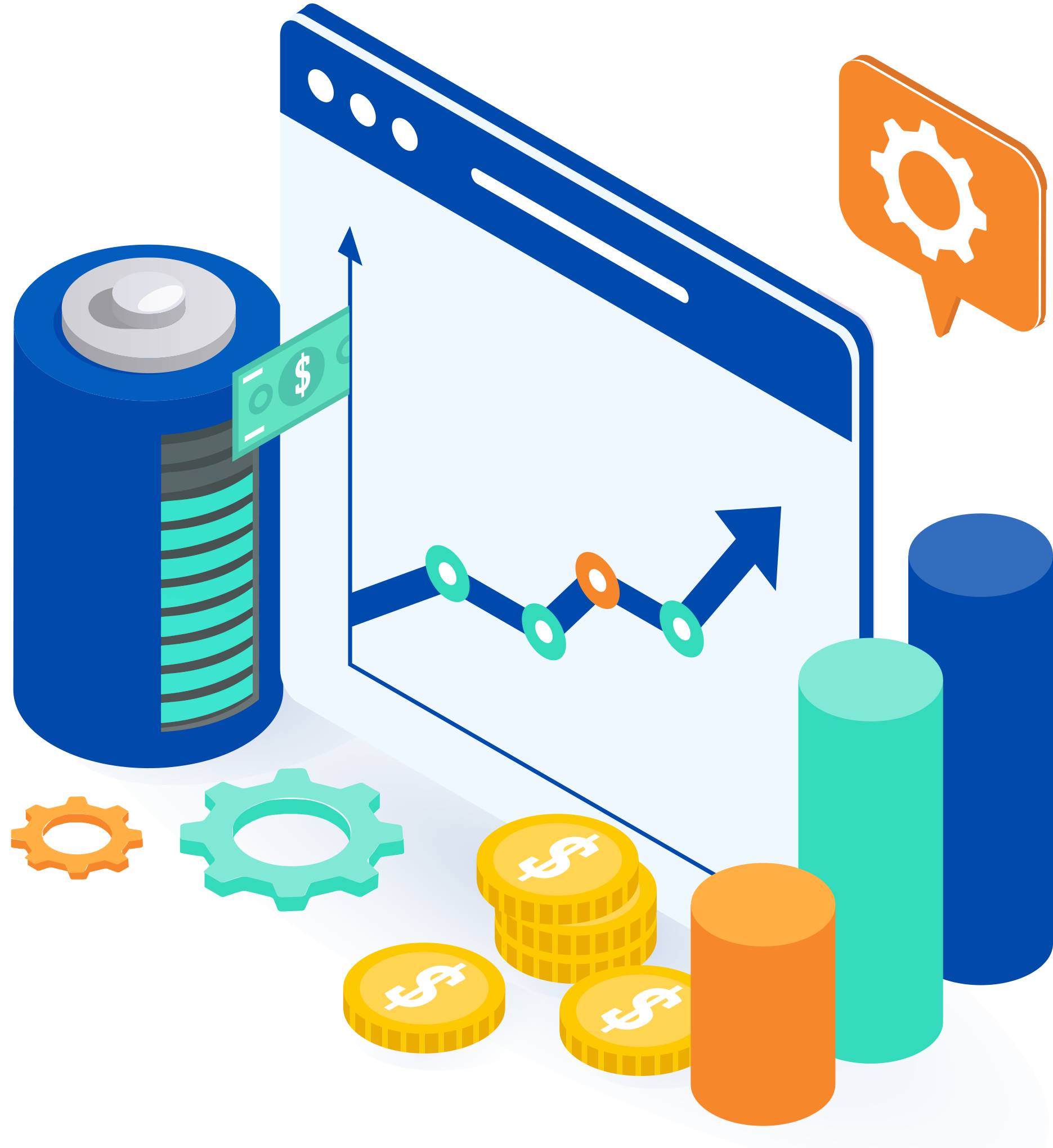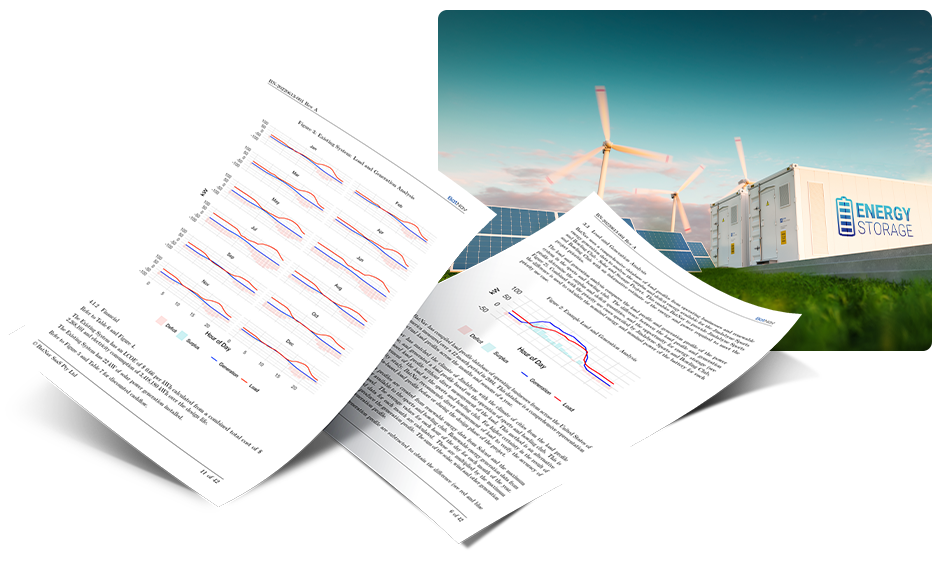OK, so you (or your boss) wants a battery. Makes sense. It's what everyone is talking about, right?
And now, you need to deliver. One of the first questions to answer is: what size battery?
Well, before you dive headfirst into solving this not-so-easy problem, let's cover some of the steps you'll need to cover in this solution. But if you already put this in the "too hard" basket, book a call with BatNav and we can sort it quickly for you.
Unless you are completely new to energy storage, you'll know that batteries are described in power and energy. For example, a 1 MW/MWh, has a nameplate power rating of 1 MW (1,000,000 W or 1,000 kW) and an energy rating of 1 MWh (1,000,000 Wh or 1,000 kWh). Lots of big numbers, I know. But what this means is that you can operate the battery at nameplate rating of 1 MW for 1h. The output is measured in MWh, so you get 1 MWh.
How many MWs (or kWs), and how many MWh (or kWhs), do you need? That depends on several factors:
- Your load (or dispatch) profile over the day and over the year.
- Your generation profile (if you have solar, wind or other generation) over the day and over the year.
- The type of energy storage because each type has different technical and financial characteristics.
- Your electricity costs now and expected costs in the future.
- Your opportunities for generating revenue from your battery.
Let's explore each of these.

Load and generation profiles
The load profile is the power consumed over a period of time. Most people don't give this much thought. But if you sit and watch an electricity meter in your meter box (embaressingly, I have done this often), you will see that the values go up and down.
Why? Stuff gets turned on and off. All the appliances and devices on an electrical circuit are loads. All of them add up to the total load. So when a compressor in a refigeration system turns on because the temperature in the system has exceeded a setpoint, that adds load.
But, less noticeable is the change in load over months and seasons. The same refrigeration system that turns on and offer during the day, demands more or less power, depending on the temperature outside. In summer, the system has to use more electricity to covert refrigerent to liquid. In winter, less electricity. And so, over the months of the year, your load profile changes.
Great, now you know that you need data for all months of the year. But wait, you can't wait 12 months to measure the load. You need to deliver this project by then! If you have this problem. Stop reading, book a call with BatNav, or send us a message. If not, read on.
If you're doing a grid-connected project then dispatch profiles are a similar concept but you can get some data on that from the NSP.
Like the load profile, generation from solar and wind changes over the day and year, and often in unexpected ways. Depending on the location in the world, generation peaks at different times of the year. The duration of generation also changes. Fortunately, there are plenty of data services that provide accurate and current generation data. So that's a relief!
Types of storage
At BatNav, we believe that all types of storage have an application because to deliver the energy transition, we will need all of them. That's why our Feasibility Package includes as many types as possible. We do this because:
- We want our customers to find the best solution, and
- We want suppliers to find the right customers.
But aren't all batteries the same. Aren't they just like AA batteries at the supermarket? Answer: a little bit of yes, and a whole lot of no.
We don't have the time to answer this here. Check out some of BatNav's webinars and other articles.
But here are some characteristics that effect the size of the battery that you need to consider:
- Design life - some batteries last longer and make more financial sense with a more time. Some batteries make sense for less time.
- Degradation - all energy storage systems degrade in power and energy over time, but electrochemical energy storage systems like lithium ion degrade with each cycle. Meaning that you need to either oversize or augment the battery to meet your electricity needs.
- Power-energy-ratio - some systems can provide equal power and energy e.g. 1 MW/Mh, and some provide less power to energy 0.25 MW/ 1 MWh. This is neither good or bad. It depends on your situation.
- Round trip efficiency - the 2nd law of thermodynamics means that we don't get back what we put in. Any system that takes 1 MWh of electrical energy, then delivers that electrical energy back, will deliver less than 1 MWh. Where did that energy go? Heat and friction, mainly. What!? Batteries are static systems! Not quite. In electrochemical systems, for example, there is considerable mass of ions moving from electrode to electrode. Each time those ions bump into another atom, that's friction.
- Capital costs - stuff costs stuff. Sometimes that stuff is made from critical minerals that have volatile commodity prices. In all cases, energy storage is expensive. You don't want to spend more than you need to. So that makes getting the battery size right a hugely important decision.
- Operating costs - no moving parts means no maintenance. Again, not quite. Depending on the supplier, you might decide not to oversize the battery but instead augment it over its design life. So you'll need an ongoing maintenance contract. Whether you oversize or augment, either way, you pay.
Electricity costs
Your electricity costs today, and your expected costs in the future, affect the optimal sizing of your battery. If you are running an industrial operation on diesel, you're paying high prices for electricity. If you are running a commerical operation connected to an electricity grid, you might have lower tariffs but get stung with demand charges and other penalties for exceeding load limits.
The more you pay for electricity today, or expect to pay in the future, the more sense a battery makes, and the more sense a bigger battery makes.
Renenue opportunities
We live in a world of markets. Old markets die. New markets are born. And money can be made.
There is not point in listing all the potential markets for generating revenue from batteries. It varies from country to country, and from one government's policy to the next.
If you have a battery that meets the criteria to participate in a market, and you are connected to a location in the network that needs your battery, then you can make money.
Capital subsidies
It seems that governments are giving buckets of cash these days for renewables. That's awesome. The energy transition needs it. But how does that affect financial performance, emissions reduction, and specifying the right size battery?
What next?
Go buy your battery! But I guess you're still trying to answer: what size battery?
If doing all this work sounds unachievable, you have two options:
- Get expert advice
- Get a supplier's sales pitch
Yes, BatNav advocates for suppliers. But we won't tell you to buy a battery if it doesn't make financial or ethical sense for you. If you choose the supplier path too early, you don't know if you have a good deal or not.
Instead, get impartial expert advice with our Feasibility Package. With a comprehensive 40 page consulting report, we solve all the problems discussed above. You'll:
- Save months collecting load and generation profile data
- Save months contacting suppliers for data on energy storage system and converting that data to compare with other systems
- Save months building a financial model to evaluate load, generation and storage options
- Save weeks preparing a report and presentation to persuade decision makers
- Save hundreds of thousands or millions over the life of your battery by getting the right battery, at the right size, and at the right price.
- Make hundreds of thousands or more from market revenue.
And we deliver in 5 days. Guaranteed.
Convinced yet? Book a call or send us a message to get started.
